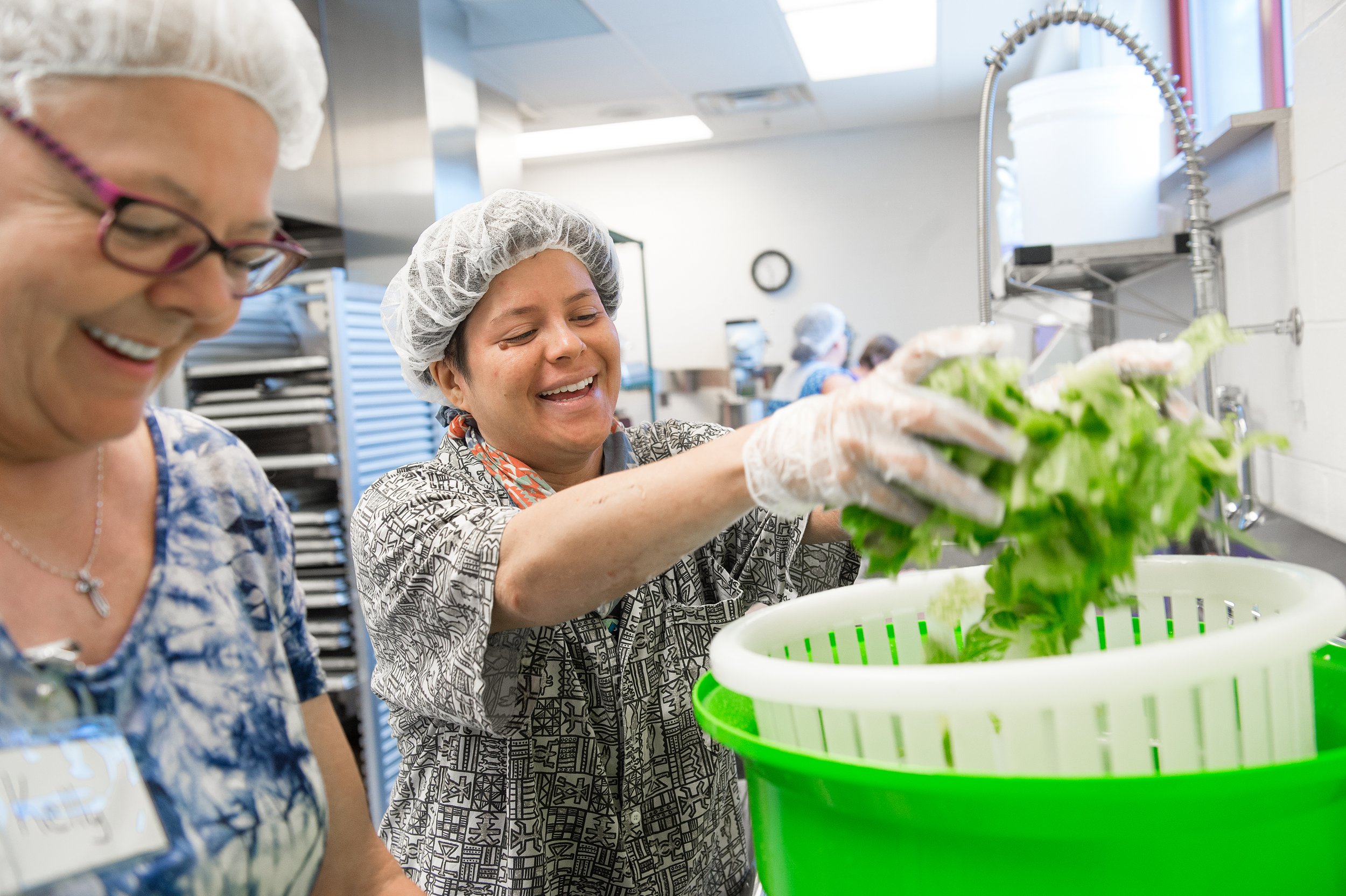
Past Projects
Our Impact:
25,000
students impacted
200
nutrition staff trained
18
school districts
Data Highlights:
We track and report on data throughout the project to guide project success with a focus in three main areas: scratch cooking, local food purchasing, and cost-neutrality.
average scratch-cooked menu
72%
average local food purchases
32%
of schools remained cost-neutral
100%
Incremental Menu Changes
We create a project roadmap to guide the gradual transition to a more scratch-cooked menu. This example of Marinara Sauce illustrates the high-level steps to transition from a processed menu component to a scratch-cooked version that can be incorporated throughout the menu.
Success Stories:
Lincoln Elementary School District 27
Lincoln, Illinois
Superintendent Kent Froebe used to be met with school-related complaints from parents at the school’s Friday night games. But then things changed with the launch of the district’s scratch-cooking program focused on local food and student well-being. Under the leadership of Foodservice Director Connie Crawley, the district of five schools established relationships with local farmers and began scratch cooking. The changes in the cafeterias were embraced district-wide with teachers creating menu-related activities for their classrooms and parents attending food education nights. Parents now approach Mr. Froebe at the football games to share positive comments about the district’s foodservice program and express their enthusiasm about how happy their children are with the new food.
Pawnee Community Unit School District 11
Pawnee, Illinois
Before launching a scratch-cooking program, the lines for the vending machines at Pawnee were so long that even a second vending machine could not keep up with the demand at lunch time as students chose snack food over cafeteria food. Upon meeting with our consulting team, teachers and administrators reported that students had low energy as a result of poor nutrition from eating processed food items. Since the start of the impressive program led by Foodservice Director Kedra Brown, the majority of students are no longer opting for vending machine food and instead enjoying meals from the 93% scratch-cooked menu prepared by the kitchen team. Beyond the cafeteria, students’ grades have increased since the launch of the scratch-cooking program.
Westminster Community Charter School
Buffalo, New York
Prior to starting a scratch-cooking program, Westminster was facing a challenge with getting students to eat. Specifically, getting the 7th grade girls to eat. At the start of the project, our consulting team was tasked with helping the school overcome this obstacle. During our project implementation steps of scratch-cooking training and local procurement along with implementing composting, we were able to build engagement and project buy-in from the student body. Within a few months of launching the scratch-cooking program, the 7th grade girls began eating in the cafeteria.
Kona Community Hospital
Kona, Hawaii
The hospital used to have what they called “Bacon Day” every Tuesday. This entailed pretty much what you would imagine - serving bacon to the hospital staff and some of the patients. To the hospital’s CEO, this practice felt counterintuitive in a healthcare setting. Furthermore, the menu featured mainly meat with very few vegetables, and none of the vegetarian and vegan staff ate in the hospital cafeteria. Our consulting team worked with the hospital to provide coaching and training to foodservice staff to equip them with the skills for scratch cooking. We helped incorporate more vegan and vegetarian options into the menu offerings and worked to increase procurement of local ingredients.



